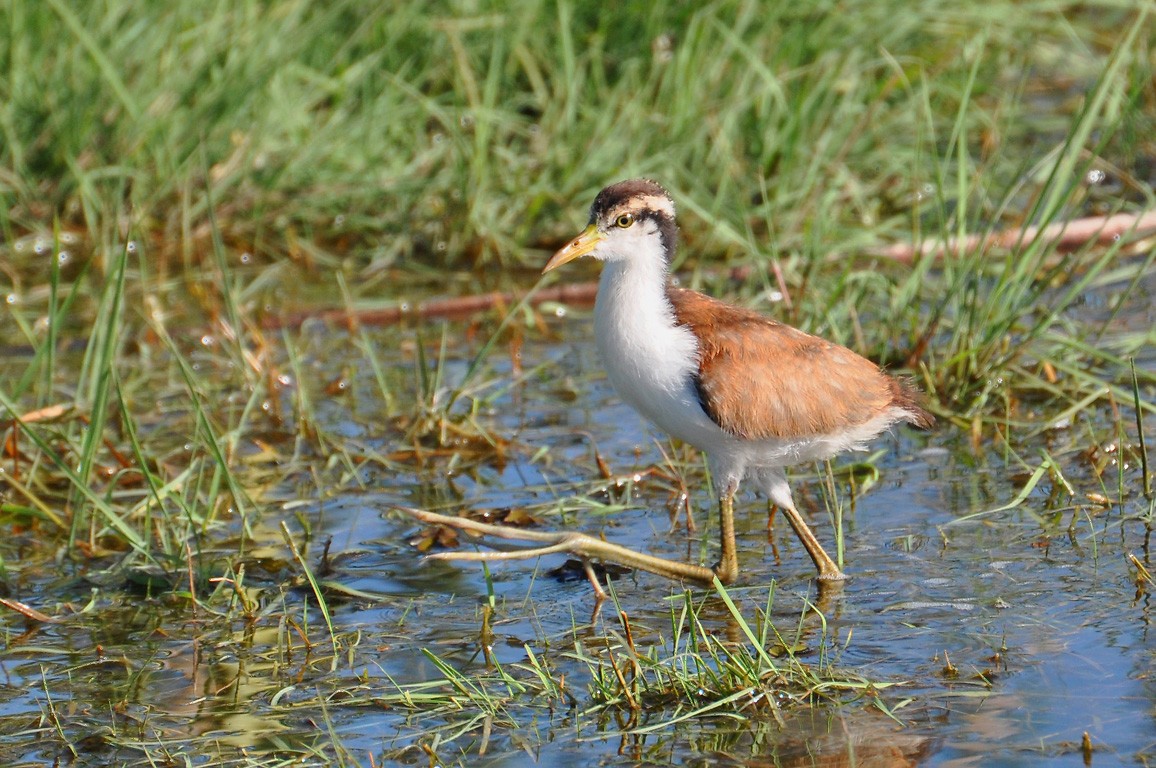Wattled Jacana
A species of Neotropical Jacanas Scientific name : Jacana jacana Genus : Neotropical Jacanas
Wattled Jacana, A species of Neotropical Jacanas
Botanical name: Jacana jacana
Genus: Neotropical Jacanas
Content
Description General Info
 Photo By Cláudio Dias Timm , used under CC-BY-SA-2.0 /Cropped and compressed from original
Photo By Cláudio Dias Timm , used under CC-BY-SA-2.0 /Cropped and compressed from original Description
The wattled jacana (Jacana jacana) is a wader which is a resident breeder from western Panama and Trinidad south through most of South America east of the Andes. The jacanas are a group of wetland birds, which are identifiable by their huge feet and claws that enable them to walk on floating vegetation in the shallow lakes that are their preferred habitat. They are found worldwide within the tropical zone. For the origin and pronunciation of the name, see Jacana. The wattled jacana lays four black-marked brown eggs in a floating nest. The male, as with other jacanas and some other wader families like the phalaropes, takes responsibility for incubation, with two eggs held between each wing and the breast. The females are polyandrous and will help to defend the nests of up to four mates. These are conspicuous and unmistakable birds. They are 17–23 cm (6.7–9.1 in) long, but the females are larger than the males. The adults have a chestnut back and wing coverts, with the rest of the body mainly black. In flight the greenish yellow flight feathers are obvious. Also visible are yellow bony spurs on the leading edge of the wings, which it can use to defend itself and its young. The yellow bill extends up as a red coot-like head shield and a reddish wattle, and the legs and very long toes are dull blue-grey. Young birds initially have entirely white underparts, and can always be identified by the presence of white in their plumage. There are six subspecies, with the nominate J. j. jacana being the most widespread. Several of the other subspecies are similar, but J. j. hypomelaena of western Panama and northern Colombia has all the chestnut plumage replaced by black, and J. j. scapularis of western Ecuador has some black feathers on its chestnut shoulders, and white outer primary feathers. 
Size
25 cm
Nest Placement
Floating
Feeding Habits
Wattled Jacana primarily consume insects, larvae, other invertebrates, small molluscs, fish, amphibians, seeds, and fruit. They forage by wading in shallow waters, often taking advantage of capybaras by picking ticks from their fur.
Habitat
The wattled Jacana is predominantly found in freshwater wetlands characterized by floating and emergent vegetation. It inhabits environments such as ditches, canals, small ponds, and is often seen foraging in shallow waters. Beyond wetlands, the wattled Jacana also adapts to forage in adjacent grasslands and croplands, including rice fields. Geographically, its range extends over various elevations, from lowland regions to areas as high as 3900 meters in the Andes, suggesting a broad ecological plasticity within its habitat preferences.
Dite type
Insectivorous
General Info
Feeding Habits
Bird food type
Species Status
Not globally threatened.
Scientific Classification
Phylum
Chordates Class
Birds Order
Shorebirds Family
Jacanas Genus
Neotropical Jacanas Species
Wattled Jacana